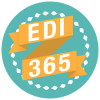
What does EEO ADR/Mediation mean in the EEO complaint process?
Have you ever had a situation where someone tries to help you resolve a perceived discrimination conflict by telling your perspective and they communicate it incorrectly, or you have problems articulating your complaint(s)? The EEO complaint process within EDI starts with filing a complaint. Then, within that EEO informal or pre-complaint process, you have the option of selecting ADR/Mediation or traditional counseling. EDI’s ADR/ Mediation process is where you can discuss/share your concerns with the other party in a safe space. Who better to tell your perspective than you?
Follow along as one of EDI’s new employees, James Hopkins, enlightens us on the new EDI EEO Alternative Dispute Resolution Program.
Tell us about the ADR/Mediation Program. What would you like the NIH community to know?
I want all participants to know that I am here as a guide through EDI’s EEO ADR/Mediation process. I, along with other Mediators, are neutral participants in the aspect that we treat participants equally, while being impartial. We do not decide who is right or wrong, and we have no authority to force participants to settle. Instead, we are here to facilitate discussions in a safe space so that the participants can explore opportunities to reconcile their differences.
Mediation, which is the sole form of ADR used at the Health and Human Services (HHS), is a tool used to resolve conflict. The objective of this resource is to assist parties in reaching a mutually acceptable resolution of the issues in dispute.
EEO ADR/ Mediation drives five important benefits:
- Gives participants a chance to express their views to each other,
- Clarifies the issues,
- Helps clear up uncertainties,
- Has the potential to save time and money, and
- Finds areas of agreement and solutions devised by the participants themselves to resolve the EEO complaint at the lowest level.
What’s the job like?
Working at EDI is great! EDI is a workplace that allows me to grow and affords me learning opportunities. This teamwork-oriented environment empowers employees to be creative and innovative. My Colleagues and managers are willing to assist, be supportive, and give guidance at a moment’s notice.
Anyone who has suffered through a protracted workplace dispute can confirm how emotionally taxing a damaging workplace experience can be. I love my job because one function of my position is to help people break free from anger, feel seen and heard, find some closure, and fully engage in the workplace—that is very gratifying to me.
What are a couple of items left on your bucket list?
Cave diving with the Great White shark in Guadeloupe, Mexico, and driving the safari in the Serengeti National Park, Tanzania are two items left on my bucket list.
Describe a meal you love.
Maryland blue crabs, sweet corn from the grill, hushpuppies, fried calamari and clams, and broccoli. For dessert: strawberry shortcake, crème brulée, and a fudge brownie with nuts.
Any closing remarks?
I’d like to share a meaningful quote from an American labor leader and civil rights activist, Dolores Huerta;
“When you have a conflict, that means that there are truths that have to be addressed on each side of the conflict. And when you have a conflict, then it’s an educational process to try to resolve the conflict. And to resolve that, you have to get people on both sides of the conflict involved so that they can dialogue.”
Do you have a story idea for us? Do you want to submit a guest blog? If it's about equity, diversity, or inclusion, please submit to edi.stories@nih.gov.
For news, updates, and videos, subscribe or follow EDI on: Twitter, Instagram, Blog, YouTube.






